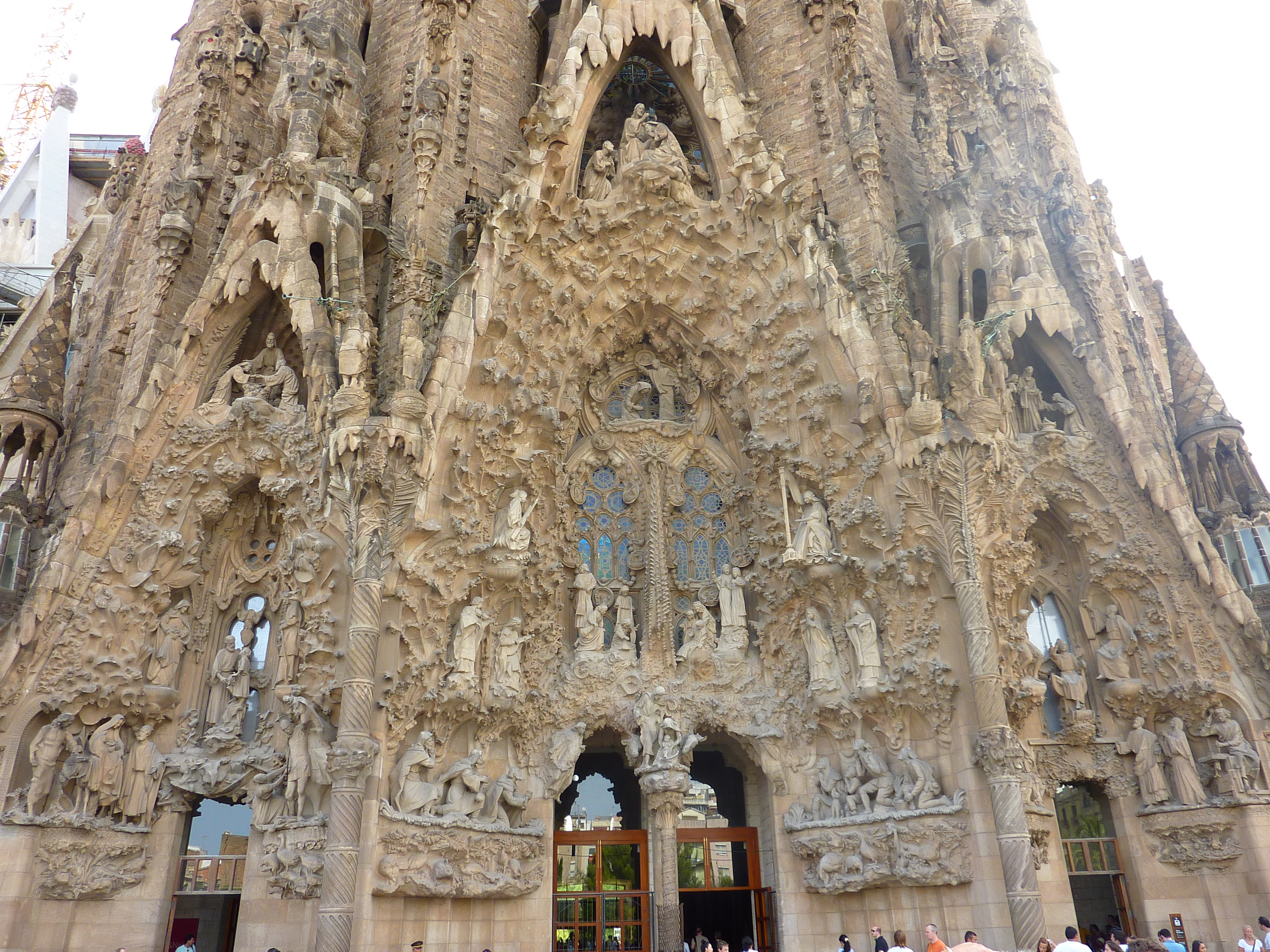Hello. My name is Jody McKinnon and this is my 4th MET course. I have found that I can really only do one at a time. I applaud those of you who are doing multiple courses! I just don’t have enough time with my online job at www.virtualhighschool.com and my day job at a high school in Ajax, ON. I just recently started at this building after 10 years at the same school. In the end, this is my 17th year overall. I am hoping that this course will offer a nice distraction from the current labour issues in Ontario. Let’s just say it’s been the most difficult start up I’ve ever experienced!
On the side, I am also finishing up a new geography text/e-text. I’m excited to see it published/go live this coming spring.
I spent most of August traveling across Europe and there was one particular place that I visited that has made me think of the definition of text. I had the honour and privilege of visiting Barcelona for three days. I went to the Sagrada Familia and it was unlike anything I’ve ever experienced.
As a media teacher, I have been very open to the definition of a text. Many of my English teacher colleagues shudder at the thought of what a text could be. Most think it must be a piece of writing. I would like to think of architecture as another text. This church was breathtaking in its interpretation of the written word. Gaudi was a master storyteller, but he chose image, shape and design to relay the messages of the Bible. Since I can only share one photo, I will share this one that depicts the Nativity. I’m not a religious person but the building is impressive. The opposite side tells the story of the Passion and the main door to the front contains the Lord’s Prayer in multiple languages. It was an amazing experience and if you ever have a chance to visit Barcelona, this is a must see!



La Sagrada Familia is actually amazing, and I am very glad that you came up with the issue of architecture as a text. I am not a religious person either, but I’ve been always fascinated about the fact that many mexican colonial cathedrals where used as texts to teach the indigenous people particular passages of the Bible. One great example of this is the Catedral de Santo Domingo de Guzman, in Oaxaca, Mexico.
You should take a look at it. Here’s a link to the photostream of Yaxchibonam in Flickr.
http://www.flickr.com/photos/yaxchibonam/6597430675
Hi Jody,Ah Sagrada! Thank you for posting this image, and describing it very fittingly with our course material. I had the opportunity to wander around the same building on a rainy night in July (actually the same day that Spain won the UEFA Euro Cup, so it was damp but lively) and all I have are blurry snapshots of the impressive building. Heard lots about the inside of it too, but photos can barely do justice to its awe-inspiring features. One of my favourite quotes related to eduational technology (and Shakespeare) is about this building:
Of course, there is plenty of time to explore both Gaudi’s architecture and Shakespeare’s plays as teachers developing our practice with a wealth of on-line resources at our fingertips. Looking forward to sharing our progress through the MET program with others on this blog.KyleMurphy, A. (2010). Shakespeare goes digital: Three open Internet sources. Shakespeare Quarterly 61(3). pp. 401-414.
What an interesting concept.
I suppose, as much (nearly, anyway) as language is an expression of culture and values, so can structures be – just think of all the unique-looking locales of the world, as well as how some close to one another share some visual and linguistic and other cultural similarities. Intriguing!